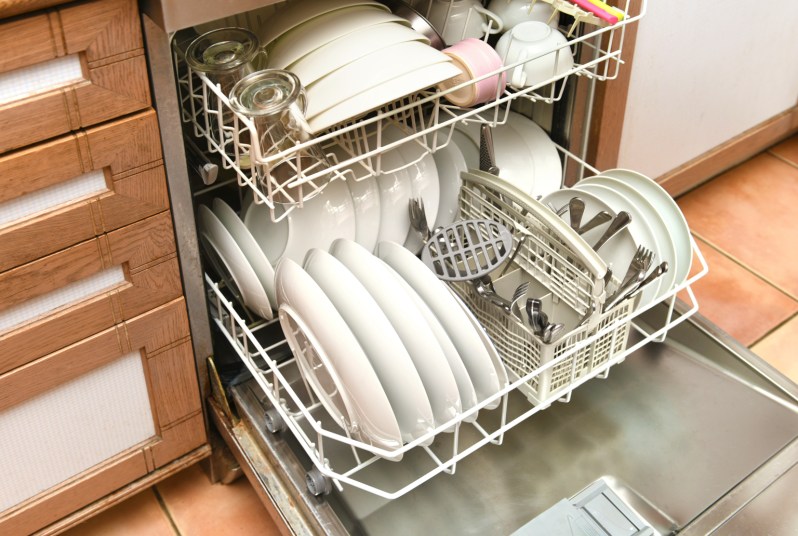3 Common Dishwasher Myths You Need to Stop Believing

The dishwasher is a modern kitchen essential. No longer should we dread the chore of hand washing and drying every dish, glass, pot, and pan that was used for breakfast, lunch, or dinner.
Although this appliance is one commonly found in the average kitchen, the correct way to load and run it is something of a mystery.
We spoke to the experts to bust three common dishwasher myths and tell us the right way to stack a dishwasher once and for all.
Myth 1: You need to pre-rinse the dishes.
Rinsing your dishes may help the overall cleaning results of your dishwasher, but it is totally unnecessary. Instead, just spend a few seconds removing large food scraps, put the dishes into the washer right away, and start the cycle.
Research shows that pre-rinsing your plates before stacking them in the dishwasher can waste up to 10 gallons of water per load. That’s a lot of water going literally down the drain.
The only time dishes need to be rinsed is if you are not planning to run a cycle for several days or if there are excessive amounts of food residue on the plate, such as tomato sauce or strong curries and avocado. A light residue means that the dishwasher detergent has something to work against!
Clean your dishwasher regularly to prevent smells and build-up.
Myth 2: Using a dishwasher will raise your energy bill.
This really depends on how often you use your dishwasher. If you’re washing dishes by hand, you’re relying on electricity to heat your water, and you may need to refill the sink several times to finish the same amount of dishes your washer could clean in one cycle.
The amount of energy your dishwasher uses also will also depend on its energy efficiency. Invest in an energy-efficient appliance to save both the planet and your electric bill.
Myth 3: You should only wash full loads.
While this may be true for older dishwasher models, but there is no need to load a dishwasher completely before using it. In fact, new dishwashers feature a “half load” option where you can choose to only clean the middle or lower rack. There’s also a wash option — for small loads with only mildly dirty dishes — that can be completed in a quicker time.
The Right Way to Stack a Dishwasher
Turns out, there really is a right way to stack your dishwasher. Always make sure there are gaps between the dishes in your washer, and that racks are adjusted to correctly accommodate the heights of the items you’re washing, so the water spray can reach every surface.
- Knife blades are best stacked facing downwards, although there is an ongoing dispute as to whether spoons and forks should follow suit! It’s really up to personal preference and makes very little difference.
- The upper rack of the dishwasher is designed to hold glassware and some models include features that reduce glassware damage, such as stemware holders.
- Stack dishes on an incline so that the water and detergent can spray up into the vessels.
This article originally appeared on our sister site, Homes to Love.













